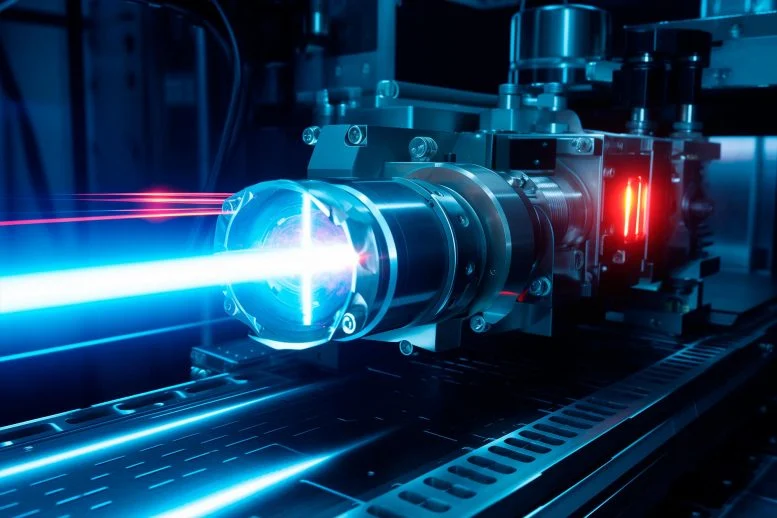Scientists are on a groundbreaking quest to uncover axions—hypothetical particles that could solve some of physics’ biggest mysteries, including the absence of an electric dipole moment in neutrons and the nature of dark matter.
Using the cutting-edge European XFEL in Hamburg, researchers fired powerful X-rays through specialized crystals, aiming to observe axions converting into light—potential evidence of their existence. This pioneering study, already rivaling major particle accelerator experiments, demonstrates the transformative potential of XFEL technology in particle physics.
A Step Closer to Understanding the Universe’s Missing Mass
A team from the University of Oxford, in collaboration with the UK Science and Technology Facilities Council (STFC) and other research institutions, has released new findings from their hunt for axions. Their experiment, conducted at the European X-ray Free Electron Laser (European XFEL) in Hamburg, is outlined in a recent Physical Review Letters publication.
Axions were first proposed to resolve a fundamental conundrum in physics: why neutrons, despite being composed of charged quarks, lack an electric dipole moment. Scientists theorize that axions—tiny, nearly massless particles—could counteract this imbalance. If confirmed, axions would provide strong evidence for physics beyond the Standard Model.
Beyond this, axions are a leading candidate for dark matter—the invisible substance constituting most of the Universe’s mass and structure.
Harnessing the World’s Most Powerful X-Ray Laser
To test for axions, the research team leveraged the world’s most powerful X-ray laser, the European XFEL, located in Schenefeld near Hamburg, Germany. This advanced facility features a 3.4-kilometer-long tunnel equipped with a superconducting linear accelerator and photon beamlines, generating ultrashort X-ray pulses at an astonishing rate of 27,000 per second.
These X-rays were directed through thin slabs of meticulously aligned germanium crystals, which contain a strong internal electric field. To high-speed particles, this electric field behaves like an extremely intense magnetic field (~103 Tesla), creating conditions where photons could convert into axions and vice versa.
A ‘Light-Shining-Through-Walls’ Experiment
An opaque titanium sheet placed between the crystals served as a barrier to photons, allowing only axions to pass through. These axions were then detected when they reconverted into photons in the second crystal, using a technique known as ‘light-shining-through-walls.’
This proof-of-concept experiment demonstrated that their setup has a sensitivity to axions that is already competitive with other large-scale particle accelerator experiments. Future studies will focus on detecting axions within the milli- to kilo-electron volt mass range, with efforts to enhance sensitivity by several hundred times to match predictions from Quantum Chromodynamics (QCD).
Collaboration and Innovation in Fundamental Physics
Lead researcher Dr. Jack Halliday, an experimental plasma physicist at STFC, emphasized the significance of this approach, stating, “This experiment highlights the versatility of XFEL technology in tackling some of the most fundamental questions in physics and expanding our understanding of the universe.”
Principal Investigator Professor Gianluca Gregori added, “This study is the culmination of long-standing collaboration within Oxford’s Department of Physics, bringing together expertise from Atomic and Laser Physics, Theoretical Physics, and Particle Physics. The success of this experiment depended on interpreting a challenging, unconventional measurement, made possible by our team’s diverse expertise.”
This pioneering experiment paves the way for future discoveries, bringing scientists closer to unlocking the secrets of dark matter and uncovering new physics beyond the Standard Model.





